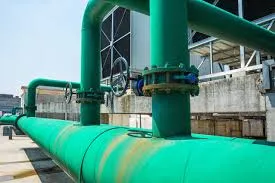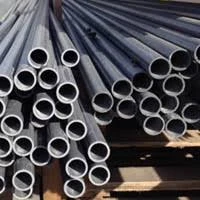
-
 Afrikaans
Afrikaans -
 Albanian
Albanian -
 Amharic
Amharic -
 Arabic
Arabic -
 Armenian
Armenian -
 Azerbaijani
Azerbaijani -
 Basque
Basque -
 Belarusian
Belarusian -
 Bengali
Bengali -
 Bosnian
Bosnian -
 Bulgarian
Bulgarian -
 Catalan
Catalan -
 Cebuano
Cebuano -
 China
China -
 China (Taiwan)
China (Taiwan) -
 Corsican
Corsican -
 Croatian
Croatian -
 Czech
Czech -
 Danish
Danish -
 Dutch
Dutch -
 English
English -
 Esperanto
Esperanto -
 Estonian
Estonian -
 Finnish
Finnish -
 French
French -
 Frisian
Frisian -
 Galician
Galician -
 Georgian
Georgian -
 German
German -
 Greek
Greek -
 Gujarati
Gujarati -
 Haitian Creole
Haitian Creole -
 hausa
hausa -
 hawaiian
hawaiian -
 Hebrew
Hebrew -
 Hindi
Hindi -
 Miao
Miao -
 Hungarian
Hungarian -
 Icelandic
Icelandic -
 igbo
igbo -
 Indonesian
Indonesian -
 irish
irish -
 Italian
Italian -
 Japanese
Japanese -
 Javanese
Javanese -
 Kannada
Kannada -
 kazakh
kazakh -
 Khmer
Khmer -
 Rwandese
Rwandese -
 Korean
Korean -
 Kurdish
Kurdish -
 Kyrgyz
Kyrgyz -
 Lao
Lao -
 Latin
Latin -
 Latvian
Latvian -
 Lithuanian
Lithuanian -
 Luxembourgish
Luxembourgish -
 Macedonian
Macedonian -
 Malgashi
Malgashi -
 Malay
Malay -
 Malayalam
Malayalam -
 Maltese
Maltese -
 Maori
Maori -
 Marathi
Marathi -
 Mongolian
Mongolian -
 Myanmar
Myanmar -
 Nepali
Nepali -
 Norwegian
Norwegian -
 Norwegian
Norwegian -
 Occitan
Occitan -
 Pashto
Pashto -
 Persian
Persian -
 Polish
Polish -
 Portuguese
Portuguese -
 Punjabi
Punjabi -
 Romanian
Romanian -
 Russian
Russian -
 Samoan
Samoan -
 Scottish Gaelic
Scottish Gaelic -
 Serbian
Serbian -
 Sesotho
Sesotho -
 Shona
Shona -
 Sindhi
Sindhi -
 Sinhala
Sinhala -
 Slovak
Slovak -
 Slovenian
Slovenian -
 Somali
Somali -
 Spanish
Spanish -
 Sundanese
Sundanese -
 Swahili
Swahili -
 Swedish
Swedish -
 Tagalog
Tagalog -
 Tajik
Tajik -
 Tamil
Tamil -
 Tatar
Tatar -
 Telugu
Telugu -
 Thai
Thai -
 Turkish
Turkish -
 Turkmen
Turkmen -
 Ukrainian
Ukrainian -
 Urdu
Urdu -
 Uighur
Uighur -
 Uzbek
Uzbek -
 Vietnamese
Vietnamese -
 Welsh
Welsh -
 Bantu
Bantu -
 Yiddish
Yiddish -
 Yoruba
Yoruba -
 Zulu
Zulu
Feb . 18, 2025 12:09
Back to list
Other Products
Exploring viable alternatives to fiberglass sewer pipes is essential for modern infrastructure development, ensuring durability, cost-effectiveness, and environmental sustainability. While fiberglass sewer pipes have their benefits, such as corrosion resistance and lightweight properties, certain scenarios necessitate looking beyond traditional materials to meet unique project requirements or improve overall outcomes.
The rise of composite materials presents another avenue. These are typically combinations of different materials designed to harness the strengths of each component while offsetting weaknesses. Composite pipes can be engineered to address specific challenges that a sewage system faces, providing solutions that surpass traditional material limitations. For instance, composites can be tailored to enhance thermal stability, mechanical strength, or resistance to chemical attack, making them highly customizable for complex projects. While evaluating fiberglass sewer pipe alternatives, decision-makers need to factor in the total lifecycle cost, ease of maintenance, installation processes, environmental impact, and specific project requirements. It's crucial for engineers and planners to weigh these factors carefully, consulting with manufacturers and leveraging case studies to predict performance in similar climatic and environmental conditions. Organizations such as the American Water Works Association (AWWA) and the Plastics Pipe Institute (PPI) provide authoritative guidelines and technical summaries on the application and suitability of different piping materials in sewer systems. Following these guidelines can ensure compliance with local regulations and sustainability standards. When considering alternatives, trustworthiness in material performance is essential. Selecting the right alternative involves assessing long-term reliability alongside upfront costs. Utilizing case studies and field research results from established projects enhances trust in the chosen materials, ensuring that infrastructure embraces resilient and sustainable practices worldwide. Ultimately, while fiberglass pipes remain popular, the pursuit of improved, environmentally friendly, and sustainable infrastructure makes exploring alternatives not just advantageous, but imperative. With advances in material science continuously shaping the options available, future sewer systems increasingly stand to benefit from innovations that bring efficiency, durability, and eco-consciousness to the forefront.


The rise of composite materials presents another avenue. These are typically combinations of different materials designed to harness the strengths of each component while offsetting weaknesses. Composite pipes can be engineered to address specific challenges that a sewage system faces, providing solutions that surpass traditional material limitations. For instance, composites can be tailored to enhance thermal stability, mechanical strength, or resistance to chemical attack, making them highly customizable for complex projects. While evaluating fiberglass sewer pipe alternatives, decision-makers need to factor in the total lifecycle cost, ease of maintenance, installation processes, environmental impact, and specific project requirements. It's crucial for engineers and planners to weigh these factors carefully, consulting with manufacturers and leveraging case studies to predict performance in similar climatic and environmental conditions. Organizations such as the American Water Works Association (AWWA) and the Plastics Pipe Institute (PPI) provide authoritative guidelines and technical summaries on the application and suitability of different piping materials in sewer systems. Following these guidelines can ensure compliance with local regulations and sustainability standards. When considering alternatives, trustworthiness in material performance is essential. Selecting the right alternative involves assessing long-term reliability alongside upfront costs. Utilizing case studies and field research results from established projects enhances trust in the chosen materials, ensuring that infrastructure embraces resilient and sustainable practices worldwide. Ultimately, while fiberglass pipes remain popular, the pursuit of improved, environmentally friendly, and sustainable infrastructure makes exploring alternatives not just advantageous, but imperative. With advances in material science continuously shaping the options available, future sewer systems increasingly stand to benefit from innovations that bring efficiency, durability, and eco-consciousness to the forefront.
Next:
Related Products









